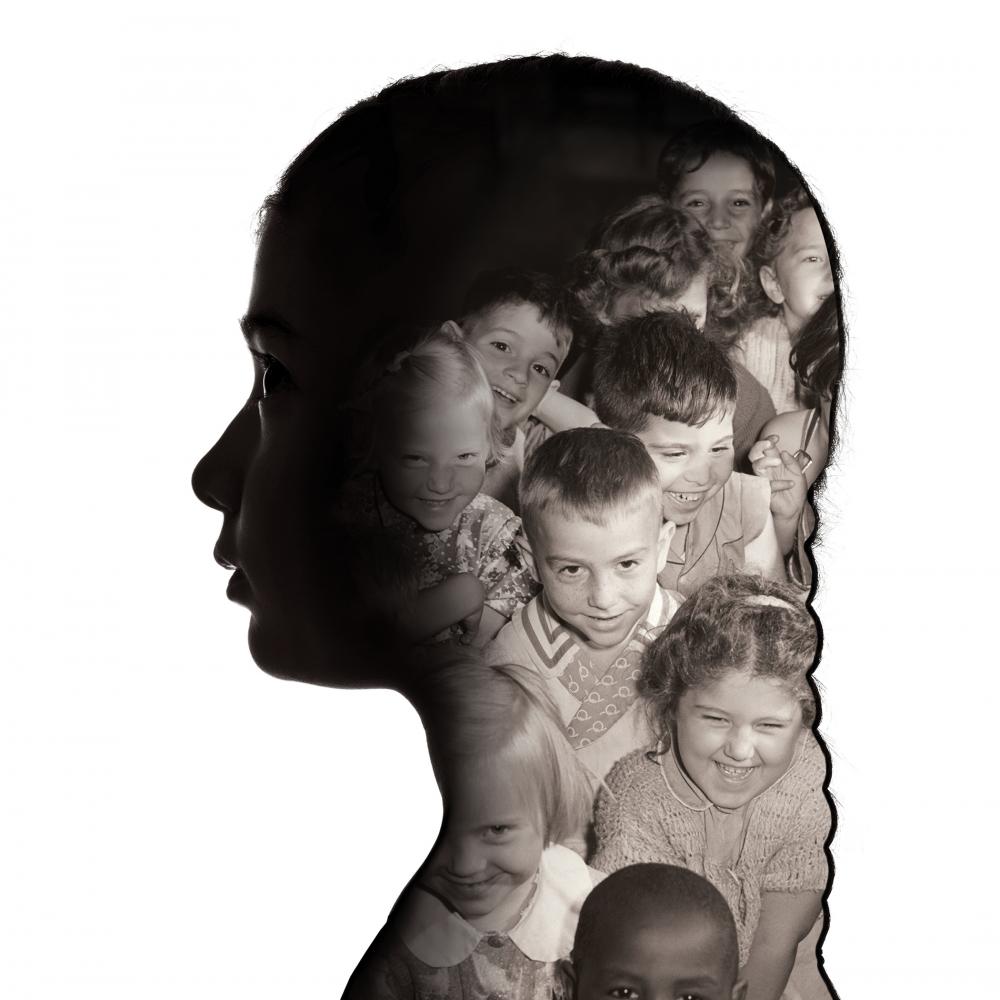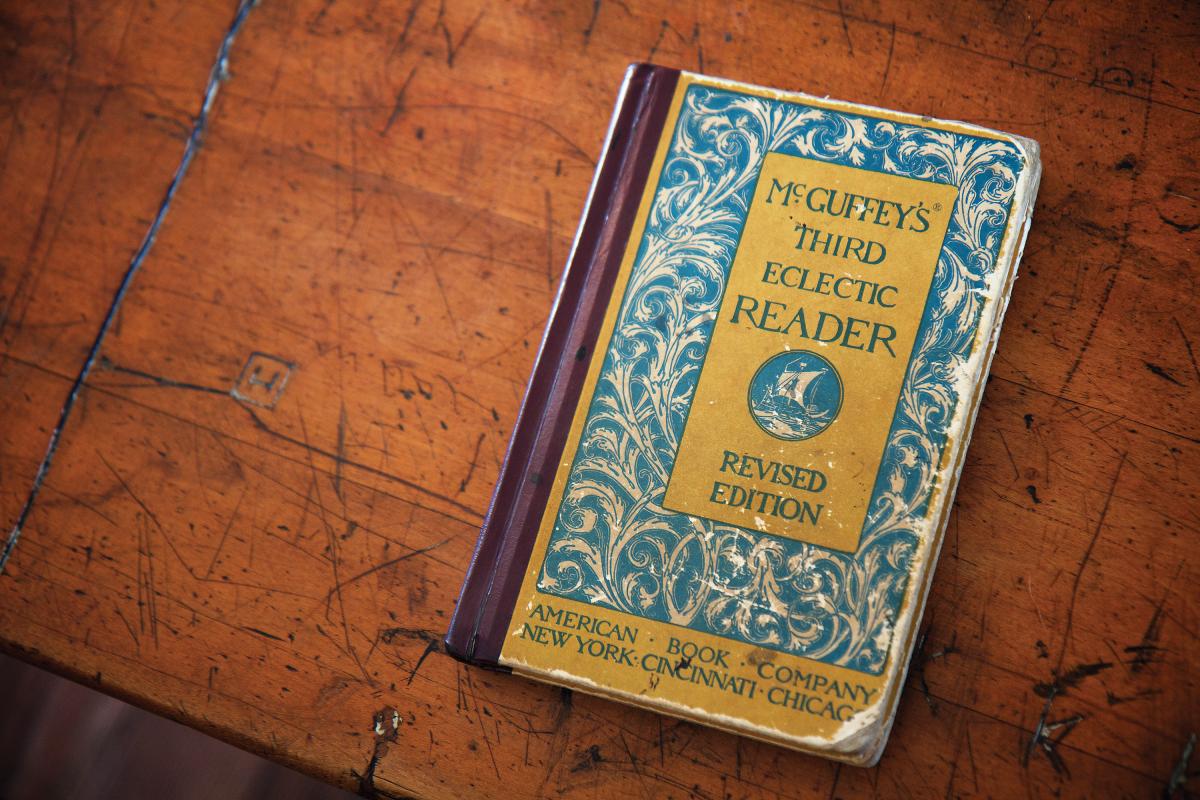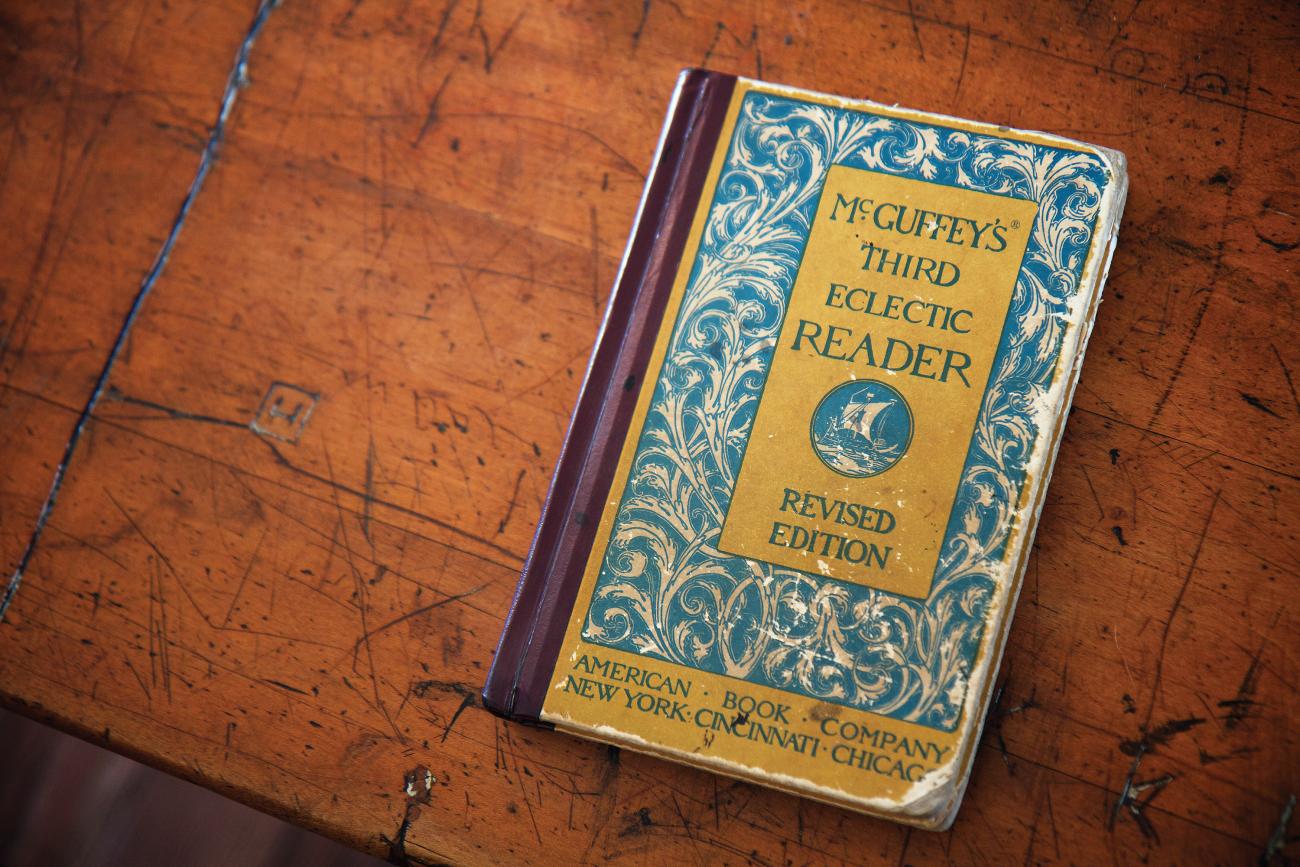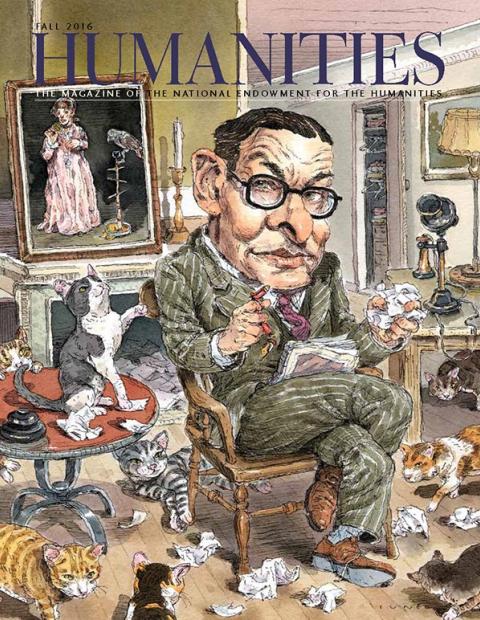“To grasp the words on a page we have to know a lot of information that isn’t set down on the page.”
–E. D. Hirsch
“I believe that the purpose of education is to master the fundamental ways of knowing.”
–Howard Gardner
One is an advocate for facts first, a sequential curriculum, direct instruction, and testing. The other recommends disciplinary understanding, projects, and individualized instruction. One concentrates on reading and the achievement gap; the other focuses on how students think and how they differ. E. D. Hirsch and Howard Gardner are our two leading contemporary educational philosophers. How are their views on goals and pedagogy different? Is Hirsch a conservative, Gardner a progressive? What are their competing views of human nature? How do their ideas connect to trends in American society? Their differences reflect various and interesting fault lines in our culture and across our intellectual and political classes, but their differences are also profoundly simple, almost reducible to one general question: Should we educate all children in the same manner or treat them all differently?
E. D. Hirsch started out as an English professor at Yale, where he studied Wordsworth and Blake and engaged in academic debate about literary theory. He moved to the University of Virginia in the late 1960s and became interested in questions related to reading and composition. When he discovered in 1978 that community college students had difficulty reading a simple passage about the Civil War because they did not recognize the names Grant and Lee, or the name of the courthouse where they met, he became an education reformer.
Encouraged by education historian Diane Ravitch, Hirsch wrote Cultural Literacy: What Every American Needs to Know, a book published in 1987 that made him famous, in part because of the appendix, which listed 5,000 words, dates, epigrams, authors, inventions, and scientific discoveries he believed every citizen should know. Americans bought hundreds of thousands of copies.
Drawing on his research on the reading habits of students and on the incendiary 1983 government report A Nation at Risk, Hirsch asserted in Cultural Literacy that test scores (particularly the SATs) were declining and that American industry lacked a skilled work force. The explanation for poorly performing schools and economic malaise was a lack of shared knowledge among children and adults.
Over a 20-year period, Hirsch expanded and elaborated on these ideas in three more books: The Schools We Need (1996), The Knowledge Deficit (2006), and The Making of Americans (2009). The problem with American schools, according to Hirsch, was not poverty, mediocre teachers, or class size, but a curriculum that was not orderly, that discounted facts and information, and that failed to recognize the connection between background knowledge and fluent reading. The problem was a pedagogy that disdained and was dismissive of testing and placed too much emphasis on small group work, rather than on direct instruction. His remedy: “the right sort of curriculum, particularly in their [students’] early years.”
What is the Hirsch vision? Background knowledge, in which Americans are deficient, should be introduced early through an explicitly taught, sequential, interdisciplinary curriculum. Such a program would avoid repetition and allow disadvantaged students a chance to catch up. To implement his vision, Hirsch and his team created nearly 1,000 Core Knowledge Schools with accompanying workbooks in 47 states. Many of these schools are charter schools, and they generally claim that improved test scores validate Hirsch’s sequential curriculum.
What does Hirsch have to say generally about education? Facts are fun and essential. Facts precede and accompany critical inquiry. Reading is key. Direct instruction is efficient and effective and should have priority over projects and individualized instruction. Learning is slow and hard.
Hirsch believes in the importance not only of background knowledge that enables us to read and think, but also in common knowledge that binds us together. In his most recent book, The Making of Americans, Hirsch champions civic knowledge, assimilation, and Americanization. Invoking Thomas Jefferson and Horace Mann, he implies that schools should encourage an informed patriotism. He criticizes contemporary child-centered schools that “train students more for private than public life.”
Is Hirsch a conservative? Certainly, a philosophy that favors information, direct instruction, and standardized testing does not sound progressive. Nor do his critiques of child-centered schools and cooperative learning. Stressing Americanization offends many liberals. His unrelenting attacks on the romantic, progressive ideology that Hirsch claims is at the heart of America’s educational failures does not endear Hirsch to professors of education.
Like many conservatives, Hirsch favors choice, competition, and charter schools, especially those that opt for the Hirsch Core Knowledge Curriculum. He seems to side with the “no-excuse school” movement—thinkers such as Stephen and Abigail Thernstrom, who believe that rightly designed and correctly run schools can eliminate the achievement gap. In Hirsch’s books, he praises the KIPP Schools with their emphasis on dress codes, character, and a content-rich curriculum. He leans toward the Common Core with its focus on higher standards and nonfiction texts, but criticizes the Common Core’s refusal to require specific information.
Yet some of Hirsch’s public statements would seem at home among liberals. Hirsch is focused not only on a knowledge deficit that cripples students but also on an achievement gap that holds back minorities. Explaining his early interest in social justice to a Baltimore Sun reporter, he stated that, as a son of a Memphis cotton broker, he inherited “this load of guilt that Southerners have,” and that he wanted a curriculum that put “all children on common ground, sharing a common body of knowledge. That’s one way to secure civil rights.” Hirsch reminds us that many disadvantaged children neither hear nor read as many words in total as children in the middle class. The gap may be as much as 30 million words, according to researcher Dana Suskind. In Hirsch’s view, schools need to compensate for this deficit to mitigate the correlation between educational achievement and social class.
Hirsch ardently believes that starting students early with his reading theory, his fact-filled and orderly K–5 curriculum, and his inclusion of more nonfiction texts can compensate for less educated parents, promote equality, and pave the way for the meritocracy he treasures. He is also no fan of “localism,” or allowing local school districts to do whatever they want. Local autonomy, he believes, diminishes rigor and uniformity and penalizes disadvantaged students who move from district to district.
If Hirsch is a social justice conservative, he is also a nuanced conservative. He concedes that progressives have brought kindness to schools, and that projects and small-group instruction have their place. He acknowledges individual differences among students but insists that large-group instruction is inevitable in a nation educating millions of students. Sometimes conciliatory, he states: “Facts and skills are inseparable. There is no insurmountable reason why those who advocate the teaching of higher order skills and those who advocate the teaching of common traditional content should not join forces.”
Hirsch is a clear and forceful writer and has mastered an enormous number of educational studies with which he sometimes overwhelms the reader. He can be strident in his attack on schools of education, which he claims indoctrinate teachers with a progressive, anti-content ideology. He criticizes Jean-Jacques Rousseau and John Dewey, insisting that romantics write good poetry but produce poor educational philosophy. At the same time, he has created a sophisticated theory of reading that makes a compelling case for background knowledge. He reminds us that reading is essential and complicated, a lifelong task that must start early. Like most reformers, he deplores the achievement gap. It remains a challenging question for Hirsch, however, whether the most detailed, finely tuned curriculum can compensate for poverty and overcome class distinctions and whether that curriculum is more important than a highly trained, effective teacher.
Howard Gardner considered becoming a lawyer, and also a pianist, but at Harvard he fell under the spell of such giants as psychoanalyst Erik Erikson, sociologist David Riesman, and cognitive psychologist Jerome Bruner. Gardner credits these mentors with setting him “on the course of investigating human nature, particularly how humans think.” Today he is a cognitive psychologist who, while teaching at Harvard’s Graduate School of Education, has written books on leadership, creativity, moral education, work, and social media.
Gardner became famous through his theory of multiple intelligences (MI), which was inspired by his work with brain-damaged adults at a veterans hospital and by his work with gifted children. The Project on Human Potential funded his 1983 book Frames of Mind: The Theory of Multiple Intelligences. In the book, Gardner argues that intelligence is not unitary but comes in eight forms, ranging from the linguistic to the logical and mathematical to the interpersonal. In subsequent books, The Unschooled Mind (1991) and The Disciplined Mind (1999), Gardner applied his MI theory to students and accompanied it with a theory of disciplinary expertise.
What is Gardner’s vision? Because a classroom includes individuals of differing strengths and skills, the teacher should individualize instruction, appealing to different ways of learning. The aim should be disciplinary or genuine understanding—or learning to think, for example, like a scientist. “The higher cognitive functions”—problem finding, problem solving, and creativity—are the ultimate goals of education. They represent civilization’s highest achievement and are necessary in a twenty-first-century workforce.
Gardner does not dismiss information but associates it with lists and uniform schooling—both of which he deplores. If Hirsch’s goal is wrong, so is his pedagogy. Direct instruction and a uniform curriculum ignore diversity and are neither effective nor democratic. Students are intrinsically motivated. Competition, fear, and testing are unnecessary, he believes.
Unlike Hirsch, Gardner is not preoccupied with civics or patriotism. He does not see the history instructor as a civics teacher, celebrating America’s founding and encouraging democratic ideals. Cosmopolitan, he is more interested in world citizenship than in American identity. He is opposed to history education that emphasizes coverage, memorization, and facts. Instead, he wants students at all levels to think like historians.
Facilitating such understanding in students requires a highly literate teacher, immersed in content. Gardner, unlike Hirsch, prioritizes a transformed teaching force.
Gardner finds such teachers in short supply. Though he says his arguments for disciplinary understanding are applicable to elementary school students, it is clear from his examples that he is more focused on adolescents. In fact, a key difference between the two thinkers is that Hirsch is focused on reading, the achievement gap, and elementary schools. Gardner is trying to teach motivated adolescents about Darwin’s finches, for example, and the structure of Mozart’s The Marriage of Figaro. Neither Gardner nor Hirsch, a teacher might add, offers advice on classroom management.
Gardner favors primary sources and projects. His watchwords are interest, depth, less is more. Skills are more important than facts, performances are better than tests, and museums and apprenticeships are as important as schools. He sees the teacher as a “guide on the side,” posing questions, rather than as an expert imparting information.
In the current climate of tests, standards, direct instruction, and compensatory education for disadvantaged students, Gardner proudly identifies himself as a progressive, even though he acknowledges progressivism is in retreat. Gardner does not believe that charter schools are a panacea and sees little value in competition, either between schools or among students. Of course, as Gardner might point out, the progressive retreat may be temporary—as students and parents rebel against standards and tests, as personalized computer instruction increases, as cooperative learning flourishes, and as social-emotional instruction returns as an educational goal.
Unlike Hirsch, Gardner does not concentrate on the achievement gap. He admits that progressive schools have limits. They work best with motivated, middle class students and require knowledgeable, creative teachers. Bluntly, he concedes, “No one can educate students effectively if most of the students come from homes that are seriously troubled.”
Gardner is no fan of traditional education, where the adult is in charge and where the students absorb a canon of knowledge on which they are tested. Still, like Benjamin Franklin, Thomas Jefferson, and Horace Mann—E. D. Hirsch’s heroes—Gardner does believe in a virtuous education and worries that “the consensus that made a ‘virtue-oriented’ education possible has frayed throughout the world.” With admiration, he quotes Ralph Waldo Emerson’s maxim, “Character is higher than intellect.”
Gardner’s application of cognitive psychology to education is impressive. Critics of MI theory, including Hirsch, question its validity, particularly its inclusion of personal intelligences. Gardner’s goal of disciplinary expertise for all may be too idealistic. Critics question whether it is realistic, achievable for most K–12 students, and capable of closing the achievement gap. Teachers, however, find its assertion—that everyone has a talent and a particular way of knowing—democratic and empowering.
The competing visions of E. D. Hirsch and Howard Gardner connect to trends in American society that emerged in the 1970s and persist today. Hirsch and Gardner both taught at elite universities that flourished during the period of their research. Both became social critics and reformers. While criticism of American society intensified, Americans turned to experts such as these for answers. In survey after survey, Americans reported a loss of trust in their institutions. The critiques particularly excoriated K–12 schools, which were invidiously compared with American universities, the envy of the world. Urban schools were found especially wanting, and they became scapegoats for society’s shortcomings. Over the years, Hirsch and Gardner have both lamented the slow pace of change in public schools.
In his research, Hirsch found declining SAT scores, an achievement gap, and workers without skills. Gardner found schools that refused to individualize instruction. For Hirsch, the schools were too progressive; for Gardner, not progressive enough.
E. D. Hirsch and Howard Gardner created their visions at a time when social science and psychology (indeed, all of academia) were becoming scientific. Both scholars paid their dues with monographs and specialized studies before becoming reformers. Hirsch backed up his claims by citing myriad experiments on fluent reading and clear writing. Gardner’s MI theory emerged from a decade of cognitive psychology research.
The pro-scientific trend was not friendly to all educators, marginalizing classroom teachers such as Rafe Esquith, who wrote inspiring accounts of classroom success but offered only anecdotal insights. Earlier in the century, William James was allowed to be more anecdotal. From science, however, emerged these two thinkers who gradually became generalists, humanists, and public intellectuals. Americans were content to allow academic experts to dominate the debate about the ills of public education.
Hirsch and Gardner formulated their ideas during an era preoccupied with race, class, and income inequality. Hirsch’s rigorous sequential curriculum is designed to mitigate each problem and to make America more middle class. Gardner offers no panaceas, but he did suggest that responding to multiple intelligences would enlarge the cohort of successful students and that society should not privilege only those with linguistic and logical intelligence.
Each thinker has tried to respond to the information revolution, personal computers, the Internet, and social media. Hirsch concedes that information is more rapidly available, but he argues that it must be internalized if students are to become fluent readers and that traditional classrooms are necessary in a democracy that tries to educate all. Gardner argues that the digital revolution decreases the need for traditional classrooms and the acquisition of facts. Digital devices, he asserts, can both individualize and pluralize instruction as well as encourage collaboration. In his latest book, The App Generation, he worries that social media discourages actual conversations and increases envy and social anxiety among young people unsure of their identity.
Both thinkers were influenced by their times—by a hypercritical reformer ethos, by scientific social science, by a democracy plagued by inequality, by a perceived decline in civics and morals, and by the rise of digital technology. And the times left these two philosophers with very different views of human nature.
Hirsch describes himself as “a political liberal and an educational conservative, or perhaps more accurately, an educational pragmatist.” He seems more comfortable with Plato and Hobbes. He hints that he has an “Augustinian” view of human nature—that human beings will be lazy and careless, that they often procrastinate and need pressure, deadlines, and maybe even fear.
Hirsch seems comfortable with a tough love but kind teacher who is knowledgeable, a “sage on the stage,” who imparts information, encourages discussion, and gives tests and grades to fix attention and ensure accountability. He is at home with adult authority, reluctant to romanticize children, and nostalgic for the certitude of Webster’s speller and McGuffey readers. He sees the need for some kind of national standards and some sort of high-stakes test, as can be found in Great Britain, France, and South Korea.
Schools need to provide models, instill habits, and encourage character. Approvingly, Hirsch quotes Plato’s question: “Shall we allow our children to hear just any casual tales?” At the same time, this social conservative believes in opportunity and justice. Schools should aspire to ameliorate society’s failings through correct reading instruction and a uniform, sequential curriculum.
Gardner is harder to pin down. He seems more comfortable with Rousseau and Dewey. Freedom-loving, he does not like authority figures, uniform schooling, formal classrooms, and national standards. Egalitarian, he does not want a cognitive elite running America and given all the rewards. Optimistic about human nature, he believes students can do without standardized tests, competition, and grades. A believer in human potential, he mistrusts the grim conclusions of evolutionary psychology, that by nature human beings are aggressive, violent, hierarchal, and territorial.
According to Gardner, students should play, imagine, construct, experiment, explore the arts, follow their interests, cultivate their individual intelligence, and collaborate in groups. Whereas Hirsch leans toward tradition, Gardner praises innovation. A self-described liberal progressive, Gardner simultaneously admires genius and praises unreserved effort and deep understanding. He believes a materialistic, pleasure-loving America should rededicate itself to good works, to truth, beauty, and goodness.
Each thinker puts forward valuable reminders and raises important questions that have policy implications for state and federal departments of education, for parents, professors, and pundits—and, most importantly, for teachers. Are students going to sit in rows or groups? Is direct instruction or cooperative learning more effective? Is the teacher a facilitator or an expert? Should we evaluate students by standardized tests and grades or projects and portfolios? Can the achievement gap be overcome by more money, more choice, and higher expectations? Should America have some sort of national standards (the Common Core) and high-stakes testing, or should we let states and local communities decide what is best for its children?
The books and articles by E. D. Hirsch and Howard Gardner reflect a passionate concern for an appropriate pedagogy for the twenty-first century. Each is a serious scholar and public intellectual. Lucid and eloquent, each offers useful insights that can challenge, validate, and improve current practices in education. The debate between their ideas has perhaps the most potential implications for classroom teachers, who some would say have the most influence on educational achievement. More pluralistic and pragmatic than ideological, teachers must decide how best to borrow from each of these thinkers, what combination of insights suits their temperament and classroom experience, and how best to benefit from the ongoing debate between discipline and discovery.




